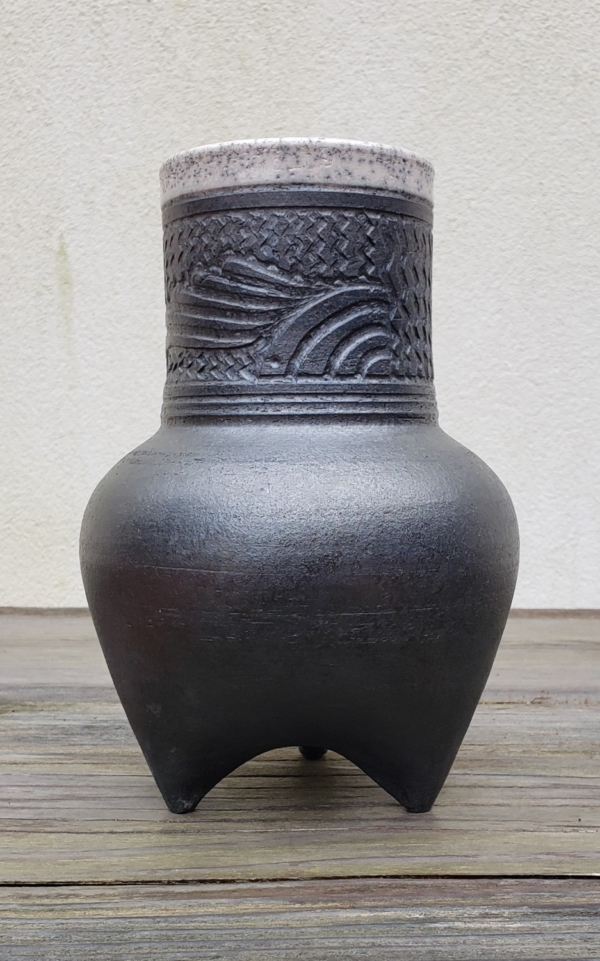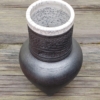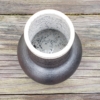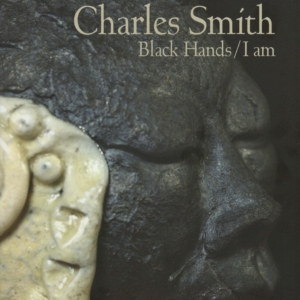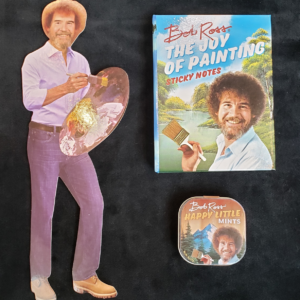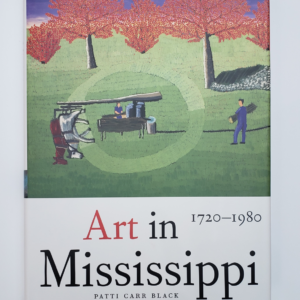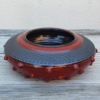Description
“Vintage Raku Vase”
Price includes shipping and handling.
Dimensions: 9.5 inches tall, 6.5 inches in diameter

Charles Smith is a well-known and well-liked Mobile, AL, potter who began his career in the early 1970s: “I began studying art after a tour of duty in Vietnam, the trauma surrounding the war made me want to pursue the arts.
”Smith matured his interest in the arts by earning a Bachelor of Science degree in Art Education with a minor in Pottery from Jackson State University in Jackson, MS. There he served as a Teacher Assistant to the late professor Marcus Douyon. Smith credits Douyon with providing a solid foundation of artistic discipline, skill, and vision that would help him grow into the artist he is today.
In 1977, he was hired by the City of Mobile as a resident artist, during which time he painted murals and taught art in city parks and recreation centers. Since that time, Smith has won some 25 first place or Best of Show awards for his work. His work was included in the traveling exhibit: “Uncommon Beauty in Common Objects: The Legacy of African American Craft Art.” He has exhibited all over the country, including the National Museum of American Art in the Smithsonian Institution in Washington, DC, and the American Craft Museum in New York City. His most recent work focuses on bold colors such as black and tan.
“I’ve been doing this for several years now, and in that time my work has evolved tremendously, but it has not changed all that much. Art for me has been a maturing process, not a series of radical departures.”
Smith said he is always attentive to the technical aspects of clay and glazes, considering their limitation, and at the same time, employing the unimagined possibilities they hold. His forms are classic, and his glazes are sophisticated in color and application.
Charles uses cone 7 stoneware and decorated each piece using a carved-and-graffito technique. The style is derived from realistic and Art Nouveau forms, mixed with and interspersed with abstract animal imagery.
While the size and shape of each piece is unique, it is – and always has been – the hand-carved surface that distinguishes his work. Designs used today originated in design elements first explored in the late 1970s. “They are the shapes and patterns of nature, and until Mother Nature finds it necessary to rediscover herself, I’ll remain content following her lead.”

